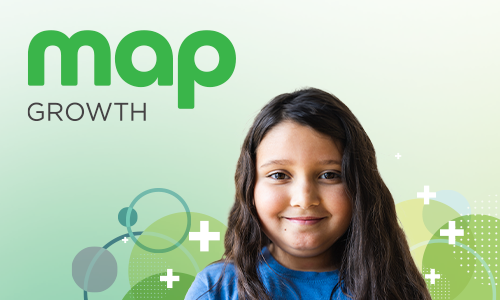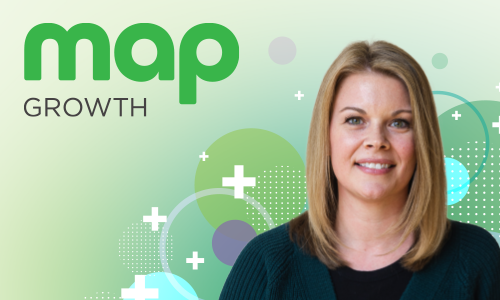MAP® Growth™ is an interim assessment given to K–12 students that provides data to help teachers teach, students learn, and administrators lead. As testing day nears, teachers help their students prepare for what to expect. Families can also play a role. Here’s how:
Before testing day
- Talk with your child’s teacher as often as needed to discuss their progress. Ask about activities you and your child can do at home to support your child’s understanding of schoolwork. Families and teachers working together benefits students.
- Provide a quiet, comfortable place for studying at home without distractions from TV or other electronic devices.
- Make sure your child is well rested on school days and especially the day of a test. Children who are tired are less able to pay attention in class or handle the demands of a test.
- Give your child a well-rounded diet. A healthy body leads to a healthy, active mind.
For the language portion of the test
- Talk to your child and encourage them to join in on conversations during family activities.
- Give your child a journal or diary as a gift so they can practice writing.
- Help your child write a letter to a friend or family member.
- Select a word of the week, and encourage your child to use the new word throughout the week.
- Plan a special snack or meal, and have your child write the menu.
- After finishing a chapter in a book or a magazine article, have your child explain their favorite event.
For the reading portion of the test
- Provide many opportunities for your child to read a wide variety of books, magazines, and other materials. By reading new materials, a child learns new words that might appear on a test. Read aloud to your child, too, even when your child can read independently. Research shows that this is the most important activity families can do to increase a child’s chance of reading success.
- Make time for frequent visits to the library, and let your child explore books that interest them.
- Ask your child’s school about a suggested outside reading list or get suggestions from your public library.
- Play games like Scrabble, Spill and Spell, Scattergories, and Balderdash together.
- Work on crossword and word search puzzles with your child.
For the math portion of the test
- Spend time with kids on simple board games, puzzles, and activities that encourage using math skills. Even everyday activities such as playing with toys in a sandbox or in a tub at bath time can teach children math concepts such as weight, density, and volume.
- Encourage children to solve problems. Provide assistance, but let them figure it out themselves. Problem solving is a lifetime skill.
- Head to the kitchen! It is filled with tasty opportunities to teach fractional measurements, such as doubling and dividing cookie recipes.
- Point out ways that people use math every day to pay bills, make change, and tip at restaurants. Involve older children in projects that incorporate geometric and algebraic concepts such as planting a garden, building a bookshelf, or figuring out how long it will take to drive to your family vacation destination.
- Read the paper together. Children can learn to read and interpret charts and graphs found in daily newspapers. Collecting and analyzing data will help your child draw conclusions and become a discriminating reader of numerical information.
If you’re a caregiver and have any questions about MAP Growth, please ask your child’s teacher, read our post on common questions, or view our Family Toolkit.







